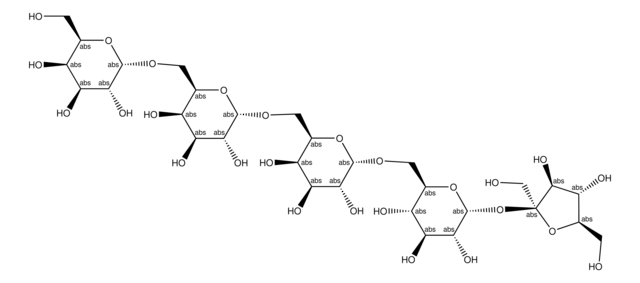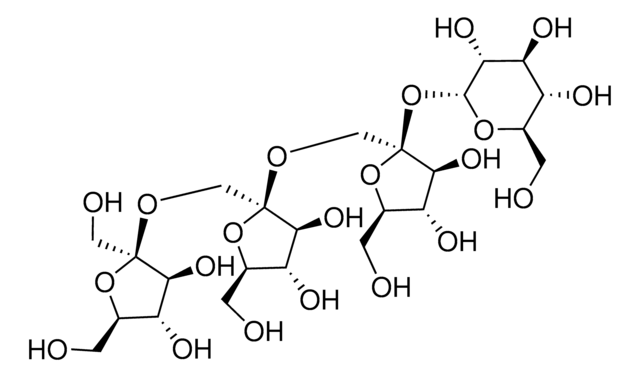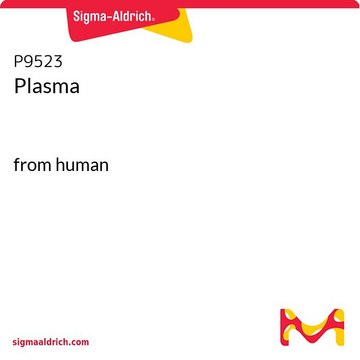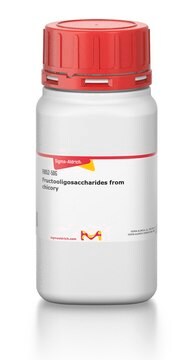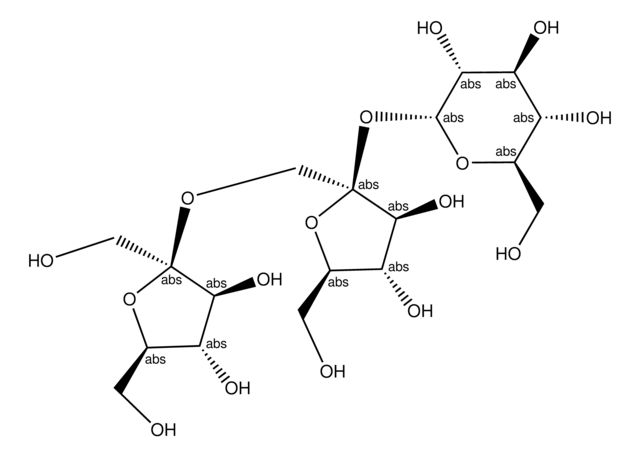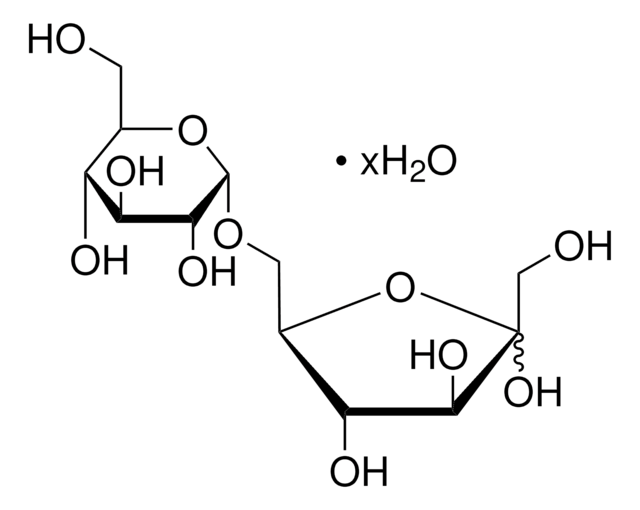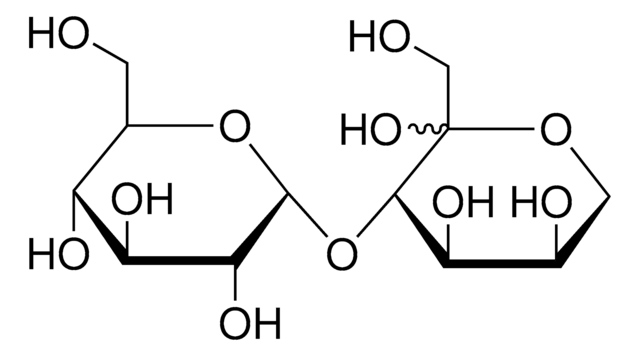S4001
Stachyose hydrate
≥98% (HPLC)
Synonym(s):
α-D-Gal-(1→6)-α-D-Gal-(1→6)-α-D-Glc-(1→2)-β-D-Fru, β-D-Fructofuranosyl-O-α-D-galactopyranosyl-(1→6)-O-α-D-galactopyranosyl-(1→6)-α-D-glucopyranoside, Lupeose
About This Item
Recommended Products
biological source
plant (Stachys tuberifera)
Quality Level
assay
≥98% (HPLC)
form
powder
technique(s)
HPLC: suitable
color
white
mp
110 °C ((230 °F))
solubility
water: 50 mg/mL, clear to very slightly hazy, colorless
SMILES string
O.OC[C@H]1O[C@H](OC[C@H]2O[C@H](OC[C@H]3O[C@H](O[C@]4(CO)O[C@H](CO)[C@@H](O)[C@@H]4O)[C@H](O)[C@@H](O)[C@@H]3O)[C@H](O)[C@@H](O)[C@H]2O)[C@H](O)[C@@H](O)[C@H]1O
InChI
1S/C24H42O21.H2O/c25-1-6-10(28)14(32)17(35)21(41-6)39-3-8-11(29)15(33)18(36)22(42-8)40-4-9-12(30)16(34)19(37)23(43-9)45-24(5-27)20(38)13(31)7(2-26)44-24;/h6-23,25-38H,1-5H2;1H2/t6-,7-,8-,9-,10+,11+,12-,13-,14+,15+,16+,17-,18-,19-,20+,21+,22+,23-,24+;/m1./s1
InChI key
YDBMRUQRXAFOAH-KTDNCYJLSA-N
Looking for similar products? Visit Product Comparison Guide
Biochem/physiol Actions
Preparation Note
Other Notes
Storage Class
11 - Combustible Solids
wgk_germany
WGK 3
flash_point_f
Not applicable
flash_point_c
Not applicable
ppe
Eyeshields, Gloves, type N95 (US)
Choose from one of the most recent versions:
Already Own This Product?
Find documentation for the products that you have recently purchased in the Document Library.
Customers Also Viewed
Our team of scientists has experience in all areas of research including Life Science, Material Science, Chemical Synthesis, Chromatography, Analytical and many others.
Contact Technical Service